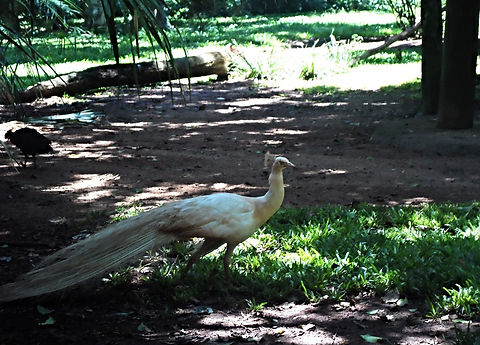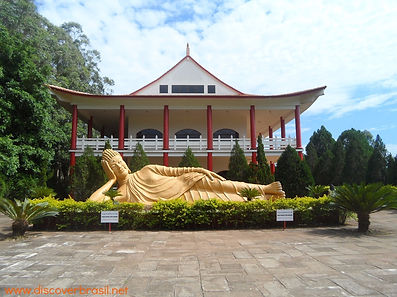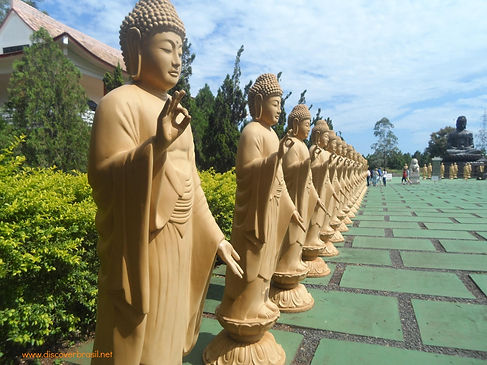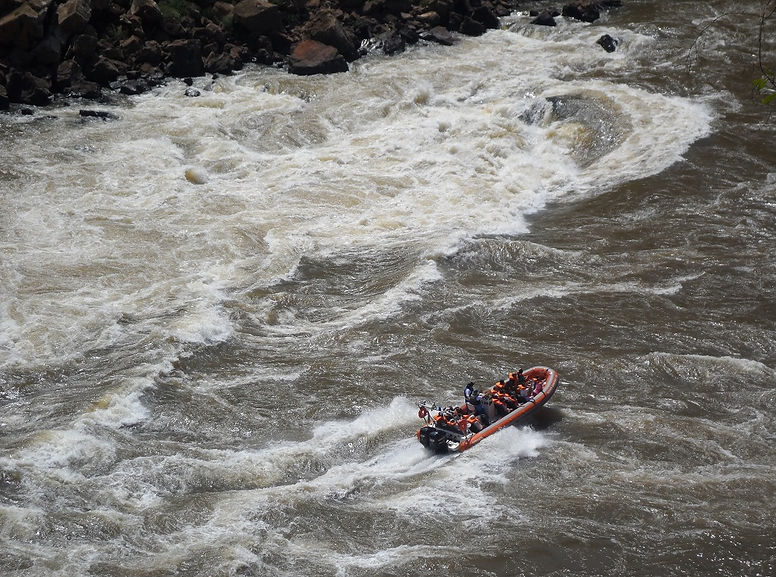Lado argentino:
Foz do Iguaçu
I designed a route trying to enjoy all what the city offers in 4 days.
Foz do Iguaçu is a city which impressed us. With large streets and very well organized, there's no way to have a bad experience. We stayed downtown, right in front of the zoo. And we couldn't find any time to visit it: There are too many things to do, and the ones I choosed are all around the city, and we had no time to cross the street and visit the zoo! Anyway, the trip was great.
And yes, we crossed the border to the Forbidden City, better saying, Ciudad del Este, Paraguay. And we crossed it to Puerto Iguazu, Argentina too.

Parque das Aves
Very well organized, this park shows us a big variety of birds. The macaw vivarium is great to observe the brazilian macaw beauty.



Templo Budista / Budhist Temple
A little less known, the temple deserves being in you itinerary. More than the good energy, from there you'll have a nice vision of both cities:Foz do Iguaçu and Ciudad del Este.
It stays right on the way to Itaipu Binational Power Plant and can be visited in the same day of the power plant visit.




Ecomuseu

Monumento


Ecomuseu
Binational
On the way to Itaipu we took a quick visit to Ecomuseu, where this little tractor picture was taken. It was used to build the power plant.
There you'll find a little of the region history before and after the power plant building.

 |  |
|---|---|
 |  |
Kattamaran, a ride apart
The Kattamaran is a ride with certain refinement, on board of a catamaran which navigates through the power plant dam. Well relaxing and great for closing the day after meeting the hydropower plant.

Finally, the falls
The time passes and with the advancement of the age, it's unavoidable: you'll have an experience with the cataracts. Terrible jokes apart, we finally got to the main part of the trip: The Parque Nacional do Iguaçu (Iguaçu National Park). With more than 200 falls (most part on the argentine side), the Park offers other activities too, like trails (besides the main one), boat riding and even helicopter ride.






**As you can see on these two pictures above, don't forget the waterproof case for your camera!**


Puerto Iguazú, the other side
Crossing the border is very simple for South American citizen, just have to present your ID. But I presented my passport, as I wanted the customs stamp. On the way to park, we got stopped by a cop, that by a mobile radar catched us a little up speed. Because of his goodwill, we just received an alert.
The Iguazú National Park is much bigger than the brazilian one. It has three main trails. The Superior Circuit, the Inferior one and the Garganta del Diablo trail, in which is necessary riding a train. The train departures from the station right on the end of the Sendero Verde (or Green Trail). The park map is right below:


Get ready for long walks. Especially if you decide to make all the main trails. We could make them wall, but it was very tiring and the sun was very strong too. Still we coudn't make the Sendero Macuco (Macuco Trail), which is more than 7 km roundtrip.
If I coudn't have made all the main trails, the one which I'd take off would be the Superior Circuit. The Inferior is more worthwhile: it gives access to Isla San Martín, which was in our plans, but we coudn't make it for the crossing was closed due to the water level.


Isla San Martín.

The argentine boat ride looks to be more exciting than the brazilian one.


Lizards and coatis are common there. What really impressed us was the birds diversity.



The Garganta del Diablo (Devil's Throat).
Some tips for your trip:
-
While programming the trip, it's worthwhile visiting the power plant website and check the tours with some advance;
-
Take a LOT of water to the argentine cataracts park, in Puerto Iguazú. There, a water bottle costs 30 pesos (more than 3 dollars);*
-
On the argentine side try visiting the Isla San Martin. When we've been there the crossing was closed due the water level, but for what I saw I can say it has an exclusive view;
-
Don't forget buying argentine pesos yet in Brazil, for there in Argentine it's wothwhile paying everything with their currency.

*Thanks to the actual exchange, the dollar is more valuable now and the water is not as expensive as it is in reais.
Keep exploring:
Any doubt about the travel?
Comment, leave your doubts and suggestions right below:
Have you ever travelled to one of these places? Send me your picture to share on Discover Brasil!





